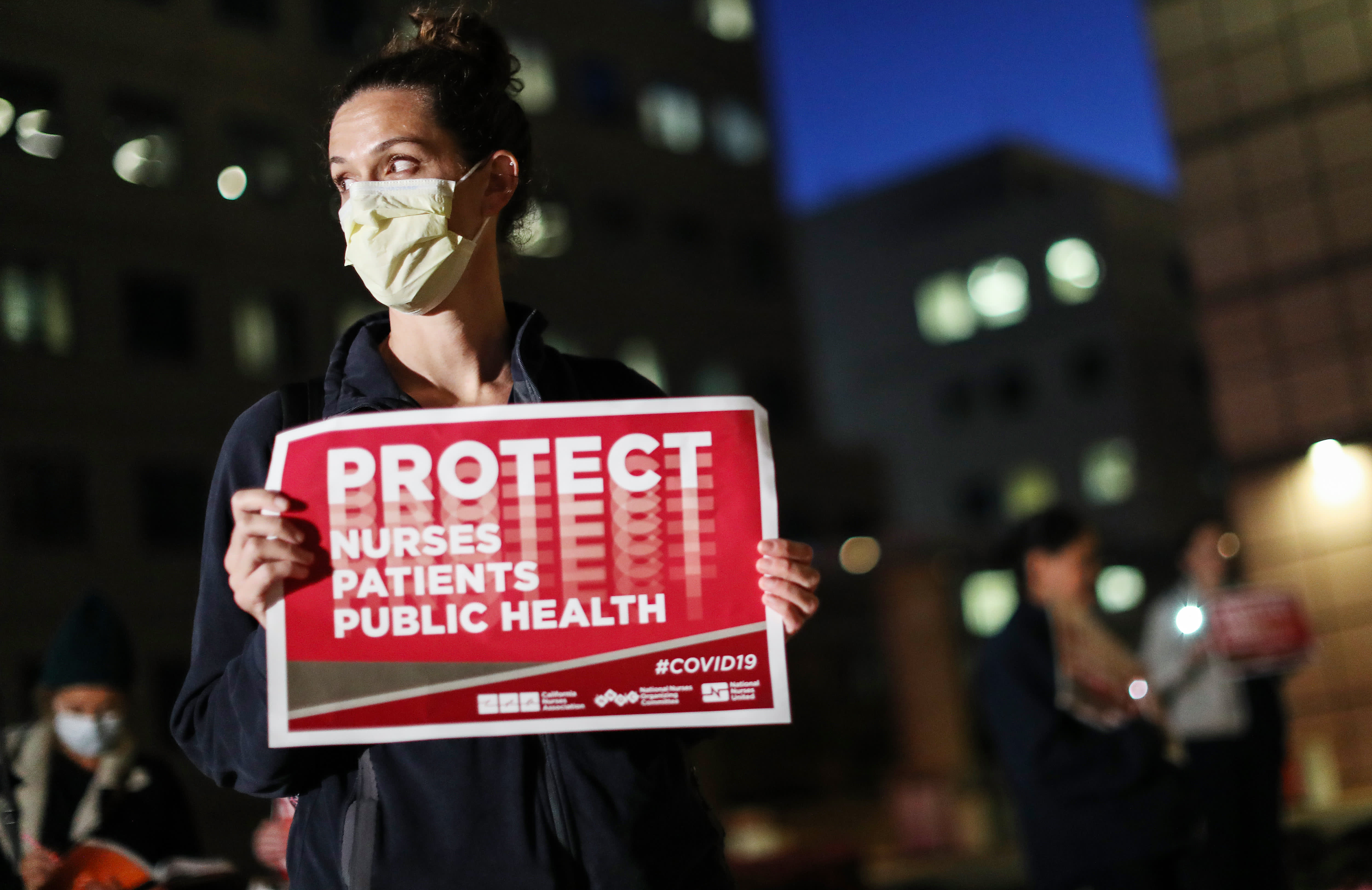
Six months into the Covid-19 crisis, there is still a dire shortage of personal protective equipment (PPE) for our health-care workers, particularly those on the front lines of the coronavirus pandemic. Doctors and nurses are still reusing single use N-95s and experiencing shortages of face shields and gloves. How did this happen in a country ranked No. 1 in pandemic preparedness by the WHO, one which comprises 40% of total global pharma spending, and represents 24% of global economic output?
At the start of the crisis, the federal government's Strategic National Stockpile included 12 million N95 masks and 30 million surgical masks, about 1% of the 3.5 billion required in the U.S. in the first year of the pandemic.
The reason for the shortage was clear then: a reliance on outsourcing PPE manufacturing to China. The White House had to order 500 million respirators from China, and received a delivery timeline of 18 months or more. But despite the efforts of major U.S. companies and innovative entrants shifting to produce PPE (HanesBrands, Tesla), why has this shortage persisted?
Because there are already signs that PPE manufacturers are ramping down production to avoid the risk of holding surplus inventory. With the prospect of another wave of Covid cases in the fall, this could lead to additional shortages.
As the co-founder and CEO of 3DBio Therapeutics, which 3-D bioprints medical implants end-to-end in New York City, when Covid-19 began I wanted to help. I witnessed firsthand the PPE shortage doctors, nurses and other health-care workers had to deal with at the height of the crisis that endangered their safety. In response, we pivoted and worked nights and weekends to build a Powered Air-Purifying Respirator (PAPR), under the moniker American PAPR. PAPRs, crucial PPE for medical professionals treating infectious disease, consist of a hooded plastic mask and breathing tube that block 99.97% of small particles. PAPRs were most famously worn by the doctors in the movie "Outbreak."
What is hampering PPE supplies
We were honored to be one of only a handful of manufacturers (alongside Ford) to receive rapid regulatory approval from the National Institute for Occupational Safety and Health (NIOSH). But the main obstacles we have faced in getting PPE to medical professionals are the three same core issues that have stymied American ingenuity and productivity during this crisis.
First, budget shortfalls have been an issue for hospitals throughout the pandemic, because critical care and inpatient services are their least profitable areas. Hospitals nationwide lost over $161 billion due to canceled procedures from March to June 2020, while uninsured visits rose 114%. This has resulted in limited budgets for PPE.
Second, unpredictability in demand creates further risk to producing PPE. Existing players or new entrants like us need to create capacity by investing to expand production. Yet in the midst of a crisis, demand is hard to predict, given budget challenges and high degrees of local volatility as the curve flattens or regions spike. In a chaotic market, there is substantial risk to your primary business if your investment in production mistimes demand.
Lastly, concerns about fraud tie hospitals to familiar manufacturers. Regulatory authorities, including the FDA and NIOSH, have been heroic in shortening timelines to get safe PPE into the hands of health-care workers. But inundated by a barrage of unreliable PPE imported from China, institutions cannot easily discern quality products from counterfeit. Unpredictable pandemic-led demand surges require nimble and local U.S. manufacturing, but hospitals face liabilities in working with new entrants.
As a nation we can try Band-Aid solutions, but I propose a simple concept to meet this urgent need and ensure our pandemic readiness for decades, while also creating jobs for our faltering economy: fund a dynamic ecosystem of U.S.-based medical production, a Manufacturing Reserve Corps.
In the next health-care emergency, imagine a network of thousands of trusted, U.S.-based, pre-approved digital manufacturing companies, standing by ready to kick into gear. Digital manufacturers use computer software to coordinate production, and can flexibly produce a broad range of medical products with minimal switching costs. These companies could build out the Strategic National Stockpile, just as aerospace & defense companies do with government contracts. This could be a modern-day equivalent of the War Production Board during World War II, converting factories from peacetime production to war needs.
Building this network of U.S.-based manufacturing firms would have a clear economic and societal return. Though manufacturing makes up only 9% of U.S. employment, it drives 35% of productivity growth, 60% of exports, and 70% of private-sector R&D, according to the McKinsey Global Institute.
A Reserve Corps could focus on traditional industrial manufacturing during peacetime, and would create thousands of U.S. jobs in industrial centers and small towns across the country.
Covid-19 is the greatest crisis of our lifetime. It has elucidated that flexible U.S.-based medical manufacturing is now an economic security and public health imperative. We urgently need federal incentives to build it.
--By Dan Cohen, CEO and founder of 3DBio Therapeutics
"still" - Google News
August 22, 2020 at 09:00PM
https://ift.tt/2E7l31V
Op-Ed: Why a PPE shortage still plagues America and what we need to do about it - CNBC
"still" - Google News
https://ift.tt/35pEmfO
https://ift.tt/2YsogAP
Bagikan Berita Ini














0 Response to "Op-Ed: Why a PPE shortage still plagues America and what we need to do about it - CNBC"
Post a Comment